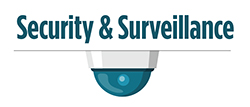
Calculating the ROI of
transit surveillance
By Lori Jetha
Safety and security are at the core of every successful transit system operation, but when it comes time to cough up the money to upgrade surveillance equipment, it can often be difficult to secure funding. Getting the budget for an upgrade is usually the first hurdle to taking a proactive approach to passenger and operator safety.
Money always talks. Supporting your request with a return on investment calculation (ROI) can be very convincing. This shows exactly what improvements and cost reductions can be achieved through investment in the latest security technology with real dollars and cents.
It helps to start with a basic model for calculating the return on investment to convince key funding contributors and decision-makers. Here is a step-by-step guide we have developed to help transit agencies measure their own ROI.
Step 1: Quantify security risks
One of the best places to start is by making a list of problem areas, or the biggest security risk in terms of time and finances. For a lot of agencies, this is fraudulent injury or accident claims. For others, it might be vandalism such as graffiti or seat destruction, increasing crime rates, or driver assaults. Try to put together as comprehensive a list as possible. It may be surprising to see how a few small things can add up to make a big impact.
Step 2: Collect historical data to create a benchmark
The next step is collecting historical cost data to create a baseline. Use actual data to establish credibility. For example, to create a benchmark for fraudulent injury claims, collect data such as the average number of claims by type, the average claim payout, the number of claims settled vs. dismissed, and the hours spent investigating claims. For onboard crime, consider the average number of crimes by type, average cost of repairs, and the cost of taking the bus out of service to perform repairs.
Consult risk management, legal or human resources departments to collect this data. It helps to calculate the monthly costs in order to establish a payback period. You can be as detailed or as general as your agency allows or time permits.
Step 3: Set goals and objectives for the upgrade
Once data is compiled, the next step is to set some realistic and feasible goals and outcomes for the surveillance system upgrade. Take the same data collected in the last step and determine which of these costs can be reduced or eliminated after the security upgrade.
In Synthesis 93 (released by the Transportation Research Board) Coast Mountain Bus Company estimated that they reduced operator assaults by 40.2 percent between 2006 and 2009 and they attribute that success to the deployment of AVL, advanced communications and video surveillance equipment on their buses.
The National Transportation Safety Board (NTSB) in their recent report on Commercial Vehicle On-Board Video Systems estimates that having on-board video equipment in concert with operator training programs can result in a 20-35 percent reduction in the number of vehicle accidents.
Step 4: Do the math
Now it’s time to do the math. First tally up the current monthly costs and then subtract the projected costs after equipment is installed to calculate the monthly cost savings.
Then use the calculation below to determine your payback period:
Halifax Transit was featured in a recent case study citing a payback period of 18 months for a $2 million investment in Seon video surveillance technology, mainly attributed to a reduction in on-board crime and easier claim investigation. Regina Transit claims their video systems decrease accident investigation times and have significantly reduced the number of assaults and crimes on board.
Take those numbers and calculate the ROI over the optimal operating period of a typical camera system (five years). Subtract the costs of the upgrade from the savings anticipated from the investment and divide that by the investment cost to calculate the ROI percentage.
With this, you have a very powerful business case, spelled out in dollars and cents, to bring to your board or decision-making committee to justify your continued investment in transit security.
Lori Jetha serves as marketing manager for Seon, a video surveillance and fleet management company based on Coquitlam, BC, Canada.

